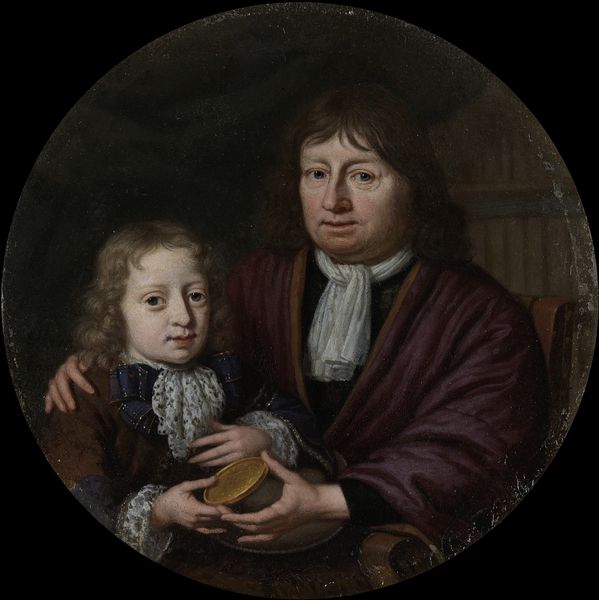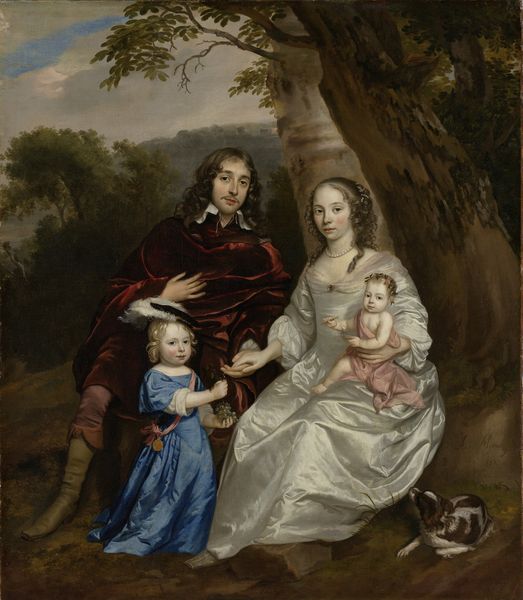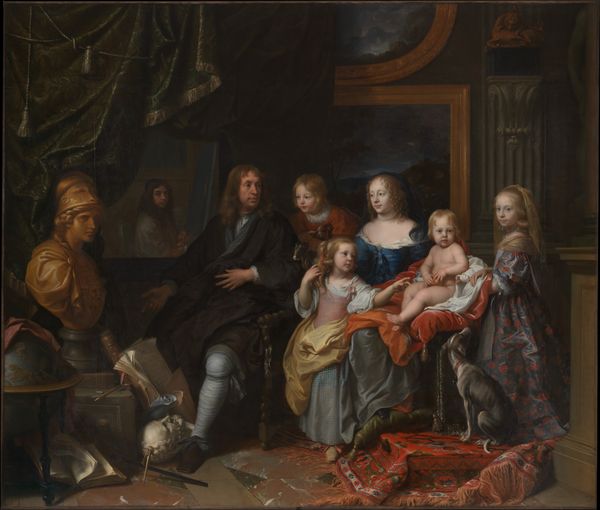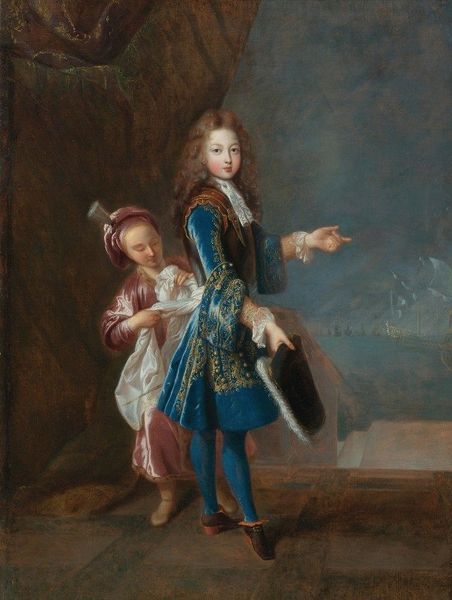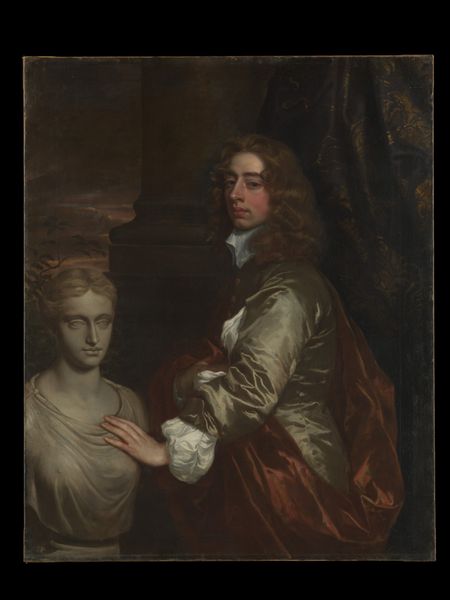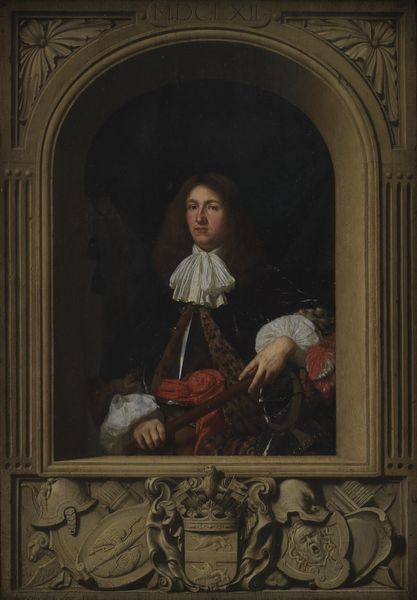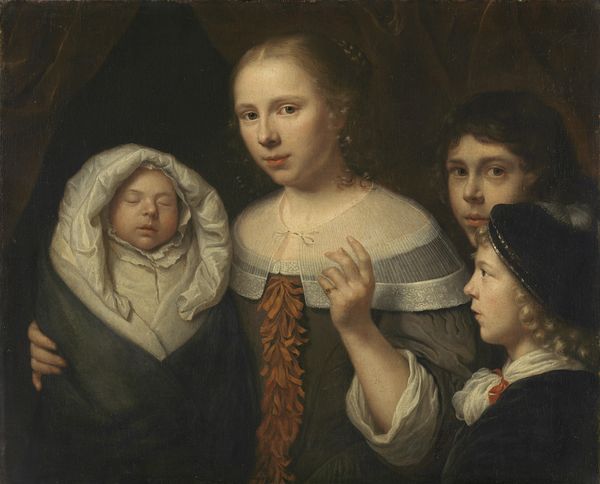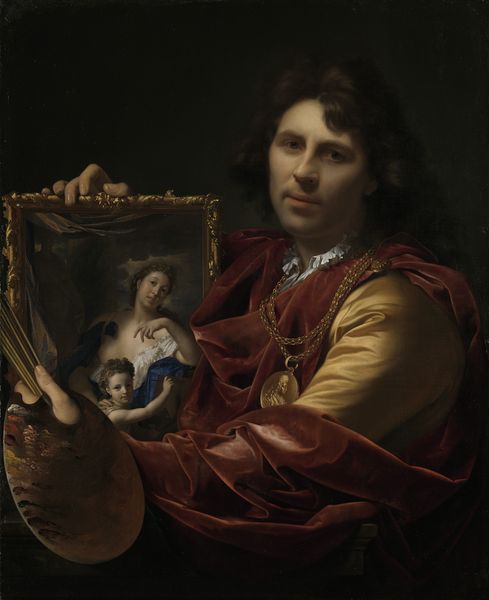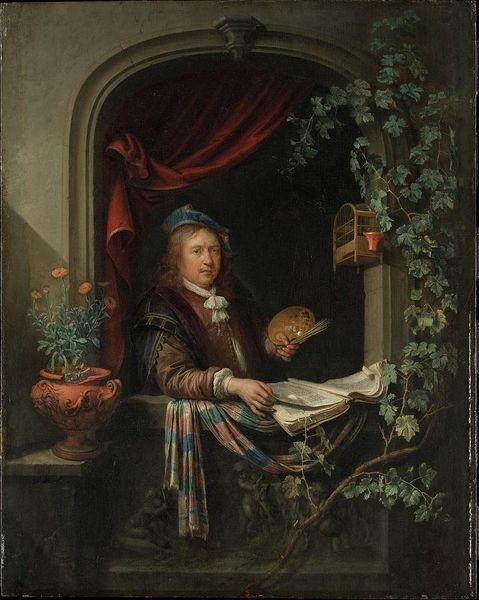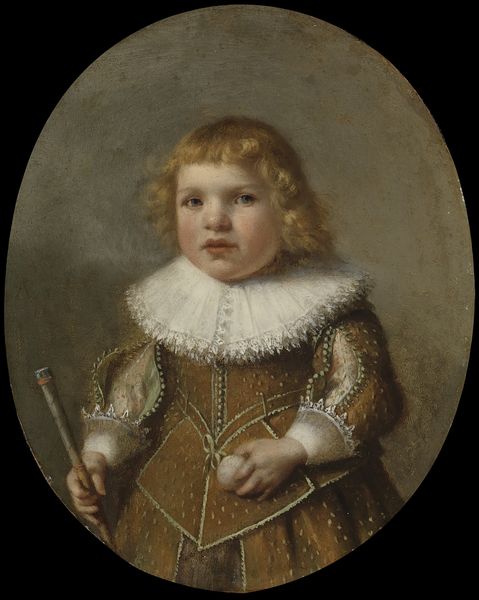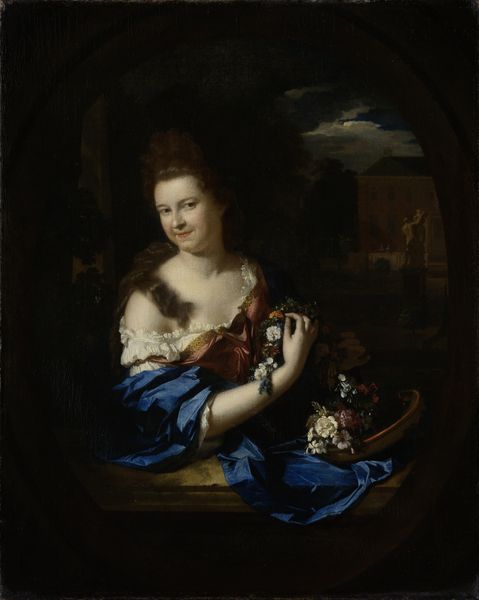
Jan van de Poll (1668-1745) and his Son Harmen Hendrick (1697-1772). 1700 - 1729
0:00
0:00
arnoldboonen
Rijksmuseum
painting, oil-paint
#
portrait
#
baroque
#
painting
#
oil-paint
#
landscape
#
group-portraits
Dimensions: height 48.5 cm, width 39.5 cm, depth 7 cm
Copyright: Rijks Museum: Open Domain
Editor: This rather dark canvas pulls you in close, doesn't it? It feels intimate and perhaps a bit staged. Curator: Indeed. Here we have Arnold Boonen's oil on canvas, created sometime between 1700 and 1729, titled "Jan van de Poll (1668-1745) and his Son Harmen Hendrick (1697-1772)." The painting employs a restricted palette within a somewhat typical Baroque portrait composition. Editor: The materials employed fascinate me. Consider the richness of the impasto in their garments, particularly against the comparatively flattened depiction of the architectural landscape. It seems to highlight the social station secured by the sitters' material wealth, perhaps the fabrics of their attire and the food stuffs in the basket. What do you make of that still life element? Curator: From a semiotic standpoint, one can interpret the grapes and fruit as symbols of wealth and abundance. Boonen cleverly uses this familiar trope to communicate prosperity but, more crucially, as compositional tools leading the eye through a triangle with its peak at the face of the older sitter, grounding it with their hands, creating a relationship and stability that unifies these figures. Editor: I find it more compelling as a display of conspicuous consumption, reflecting the Dutch Golden Age's mercantile society where prosperity underpinned patronage and commissioned work. Boonen seems rather attuned to his patron's worldview; however much he understood pictorial artifice, he understood this deeper. The painting is not so much about an individual, but an institution - a lineage, a place in society. Curator: Precisely. And that sentiment extends into the careful placement of their hands; an offering, a lesson. The interaction is charged with symbolism relating to legacy and inheritance. The muted palette only accentuates these elements and elevates the figures depicted. Editor: I wonder about Boonen's own hand in this. How the economics of art influenced the construction of dynastic images to celebrate family legacy for generations, literally shaping perception of people over time through a painted canvas. Curator: These kinds of painterly manipulations serve an underlying conceptual apparatus, elevating and immortalizing its subject. Editor: It prompts reflections on our own material world and who will chronicle its details. Curator: An astute observation that leaves much for contemporary audiences to contemplate.
Comments
No comments
Be the first to comment and join the conversation on the ultimate creative platform.
